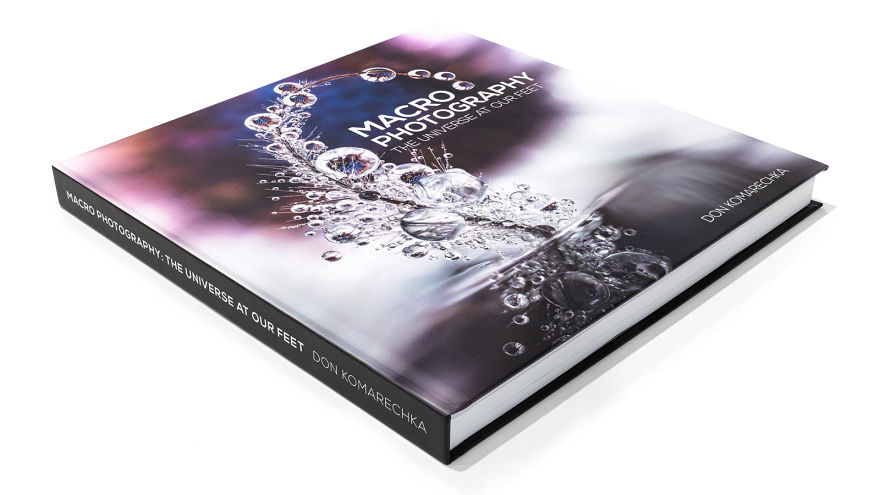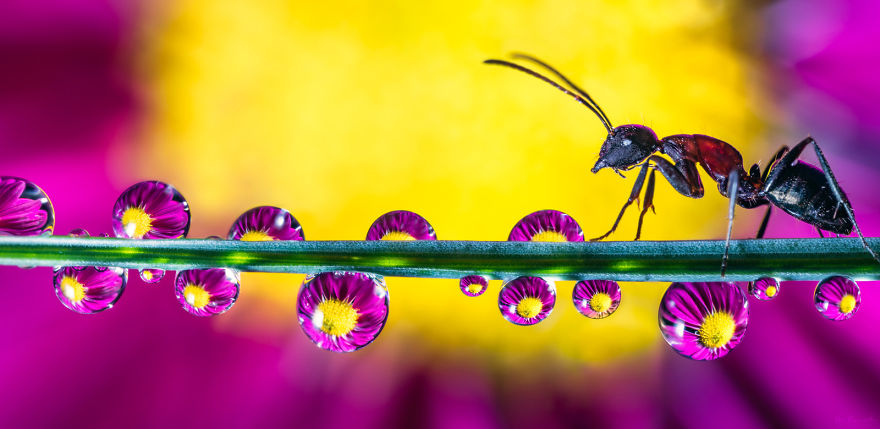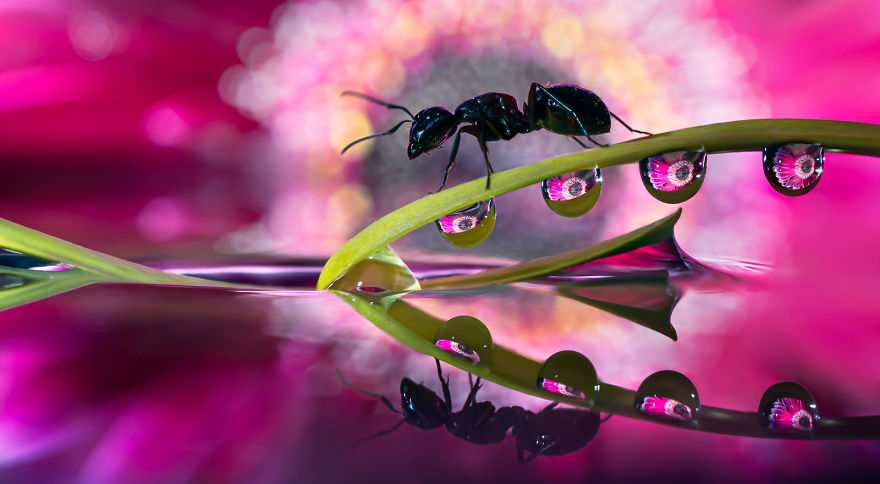Shooting Water Droplet Refractions For Magical Macro Images
Getting good droplets can be problematic, as most surfaces will cause water to spread out rather than to bead up nicely. Using just plain water (no glycerine or other additives), one of the easiest foreground objects to use is a dandelion seed.
More info: kickstarter.com
All wildflower seeds with any amount of fluff on them are likely to be a good performer here, creating exactly the kind of droplets we need while also allowing a clear line of sight to the background with no obstructions. Other foreground surfaces that work well with simple misting from a spray bottle include bluegrasses, spider webs, Barberry and Lupin leaves, and vine tendrils.
Something as simple as a twisted blade of grass covered in fine droplets can make for a compelling composition, but these images reveal one of the challenges all macro photographers face: depth of field becomes so shallow that it does not extend to the depth of the blade of grass. We reap the benefits of a soft and smooth background, and some images can survive with such a shallow depth, but focus stacking is the answer if you want perfect foreground details.
Effectively, focus stacking is a technique that allows you to extend your depth of field by shifting the focus very slightly, covering an overlapping range of focus. The more additional frames you add, the greater your depth becomes. We want the best of both worlds: avoiding a cluttered background while having sharpness everywhere desired, whilst simultaneously avoid problems with diffraction. There are many software applications available to combine these images, but with less than a dozen frames needed at maximum for water droplet work, my preference is ON1 Photo RAW or Photoshop.
Lighting is another key consideration here – the droplets need to “glow”. To achieve this, off-camera flash or bright LED flashlights are used with the intent on lighting the background more than the foreground. The foreground doesn’t need to be completely in silhouette but some level of control is required here for best results. Thankfully a piece of cardboard in the right location can cast a shadow on the foreground without impacting the background light.
Depending on a spray bottle can be an unwanted element of chaos, especially if you want very specifically placed droplets. If you’d like to take control of this element, use a narrow-gauge hypodermic needle to place the droplets where you’d like them. The tip of the needle is hydrophobic so water wants to escape it and “jump” to the surface you are attempting to place it on with far more ease than using a glass eyedropper or plastic pipette. I’ve purchased blunt-tipped needles on eBay.
Careful subject selection, lighting attention on the background, and focus stacking all come into play, but so does speed. The smallest water droplets will evaporate very quickly, depending on the relative humidity where you are working they can disappear in less than a minute. Because aligning the visual ingredients is best done by rotating the camera around the droplets as the center of rotation, this makes using a tripod cumbersome or at the very least, time-consuming. Most of the images in this series have been shot hand-held, with frame alignment in post-processing to compensate for frameshifts. Supporting the end of the lens with your left hand or arm goes a long way for stabilizing your lens, though there is some level of practice involved. Just gently pushing your face a bit more firmly on the back of the camera can be enough to shift the focus by the amount you need, otherwise, move your whole torso slightly for better control of this focus shift. Sounds crazy, but it works; just remember: very slight movements.
Want to learn more macro photography techniques including a deeper explanation of water droplet refraction photography? I am currently producing a 352pg hardcover book titled “Macro Photography: The Universe at Our Feet” that you can back on Kickstarter, due out before Christmas, 2019.
















No comments:
Post a Comment